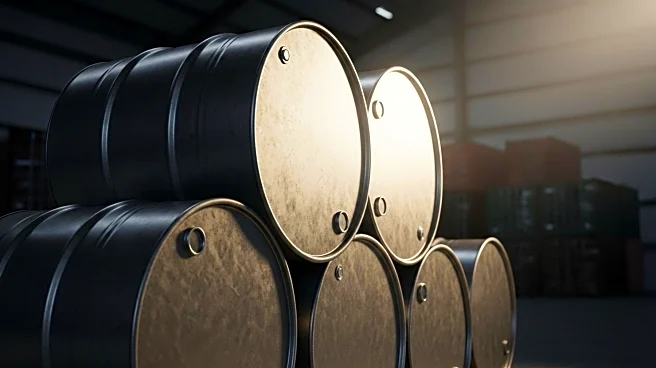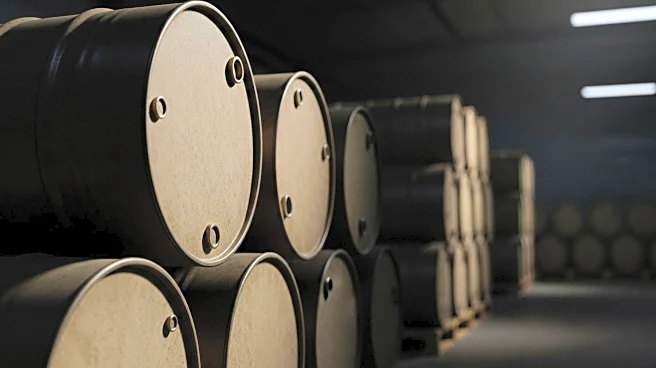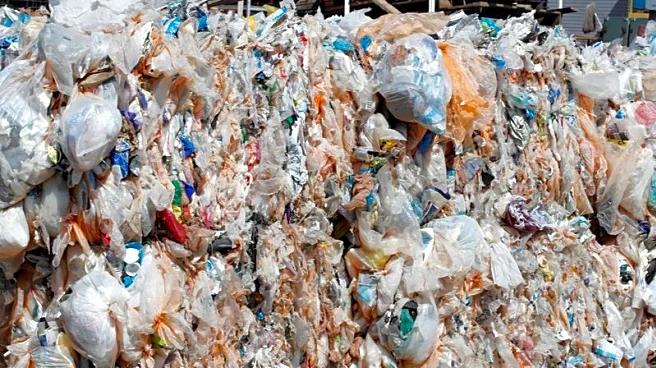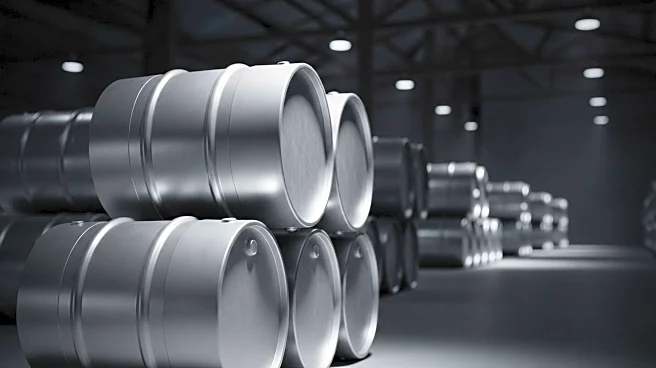What's Happening?
The U.S. Energy Information Administration (EIA) has projected that U.S. total distillate inventories will end 2025 and 2026 at multiyear lows. This forecast is attributed to significant inventory draws in 2025, strong export demand, and domestic production declines resulting from refinery closures. Distillate fuel oil, which includes diesel fuel used in vehicles and home heating oil, is expected to face elevated risks of higher prices and price volatility, particularly during high-demand periods such as the autumn harvest and winter heating season. The EIA's September Short-Term Energy Outlook highlights a 17% decrease in U.S. total distillate inventories during the first half of 2025, driven by reduced supply of renewable diesel and biodiesel, leading to increased demand for petroleum-based distillate fuel oil.
Why It's Important?
The forecasted low distillate inventories have significant implications for U.S. industries and consumers. Higher prices and increased volatility could impact transportation costs and heating expenses, affecting both businesses and households. The reduction in renewable diesel and biodiesel supply, coupled with increased petroleum distillate consumption, underscores the challenges in transitioning to more sustainable energy sources. Additionally, strong international demand for U.S. distillates, particularly from European countries replacing Russian products, places further pressure on domestic inventories. The closure of refineries, such as the LyondellBasell Houston refinery, exacerbates the situation by reducing production capacity, potentially leading to supply shortages.
What's Next?
The EIA expects renewable diesel and biodiesel consumption to partially recover in the second half of 2025, driven by production mandates under the Renewable Fuel Standard. This recovery may help stabilize distillate inventories by offsetting increased petroleum distillate consumption. However, continued strong international demand and further refinery closures in California could maintain downward pressure on inventories. The anticipated increase in renewable diesel production in 2026 may mitigate some of the declines in petroleum distillate production, but the overall outlook suggests ongoing challenges in balancing supply and demand.
Beyond the Headlines
The situation highlights broader energy policy challenges, including the need for investment in renewable energy infrastructure and the potential economic impacts of transitioning away from fossil fuels. The reliance on petroleum-based distillates amid declining renewable fuel supplies raises questions about the sustainability of current energy practices and the urgency of developing alternative energy sources. The geopolitical dynamics influencing international demand for U.S. distillates also underscore the interconnectedness of global energy markets and the potential vulnerabilities in supply chains.












